One of the most intriguing trends in the music technology products market is the introduction of new controllers that change the way that people interact with computers. Developing products like this can be a huge undertaking, but they are critical in the development of the computer as a musical instrument. The computer has already allowed musicians to develop new styles of music, and hopefully this new generation of controllers will usher in new levels of musical virtuosity.
One person that knows a thing or two about how people interact with hardware is Roger Linn. His influence on the interaction between human and machine goes all the way back to the original drum machines in the 80s. Roger has a gift for taking a given technology, removing the parts that aren't helpful for the user, and presenting it in a way that doesn't get in the way of the intended process. His products often break new ground, but never just for the technology's sake. They are musical instruments.
This is the second interview Roger has been gracious enough to sit for. Never one to stand still Roger is always trying new things like the Linn Drum, the MPC, and the Tempest he did a few years ago with Dave Smith Instruments.
His latest development effort is the LinnStrument, a hardware controller that captures three dimensions (pressure, left/right and forward/backward) of each touch, polyphonically, for highly expressive musical performance of each note's loudness, pitch and timbral changes. It supports the emerging MPE Multi Dimensional Polyphonic Expression standard for connecting polyphonically expressive controllers and sound generators.
Do you have a development process?
I start with imagining an instrument that I'd like to have but doesn't exist. Then I write my initial thoughts in a text document, starting with a general description then drilling down into the details like what's the UI (user interface) and UX (user experience), the main circuit components and any custom components.
Once I have a pretty good idea, I create a 3D model of it in my Rhino 3D modeling program. That's a lot of fun for me, moving controls around and imagining playing it, trying to keep it as simple as possible without removing needed functionality, and trying to make it visually beautiful. Then I create the details of the circuit, mechanical design, any custom parts, the software, etc. Then once I've got the basics, I usually bring in friends to help with things like the advanced software and circuit board layout, at which I'm not great.
When you did the original Linn Drum, did you have a process then?
To start with there weren't all the programming tools that there are now.
Roger with the LM-1 Drum Machine
What was the most difficult part of the development process of LinnStrument?
Developing the sensor, which is the heart of LinnStrument. You can't just go out and buy an off-the-shelf electronic touch sensor that senses multiple touches in three dimensions, runs fast enough for playing rhythmic music, is transparent for LEDs to shine through, and is large enough for a full-range playing surface.
So I had to create my own, and creating such a sensor was a very challenging engineering task. It took me about 4 year to design, refine and patent it.
What was the most satisfying?
I love creating different industrial designs in 3D and seeing the perfect renderings of it before any physical product is created, imagining playing it myself. Sometimes I wish my 3D modeler had a button called "Now go build it." In LinnStrument there were also a number of very exciting moments in the creation of the sensor, the sensing circuit, the software, and the general look.
Over the years you have learned a lot about making products. What are some of the things that you have learned over the years that went into the development of the LinnStrument?
Yea. Many things. An instrument must be powerful enough for pros, but simple to use. It must be reliable and road-worthy. It must be immune to all kinds of nasty power problems out there in the real world. It must be simple to manufacture. And it must sound great and play great, and look so cool that it inspires. Balancing all those things while also making it affordable is tricky. I think I've learned enough over the years about each of the skills—hardware, software, user interface, industrial design, production design, etc.— that I've gotten pretty good at making the whole instrument.
What's great about using the computer as a musical instrument? What do you see as the limitations?
If you're referring to someone who uses the computer as his musical instrument without a MIDI keyboard or other musical interface, I assume you're referring to someone who makes music by non-realtime assembly and editing of beats, loops and sequences but doesn't necessarily know about musical notes or chords. If so, I would say the limitations are that if you don't know about notes, chords and other traditional musical elements, the quality of the music you create will be limited, and for me the creative process is less fun than playing in real time with other musicians.
Is technology dictating the style or is the style dictating the technology?
People tend to make music that it is easiest to create on the tools they have. Computers are best at doing the same thing over and over again, so loops are popular in current music. And there is a century of audio recordings on the web, so it's easy to create new music by DJing a bunch of existing audio samples, loops and beats rather than that pesky process of learning notes, chords and music theory.
And MIDI keyboards are essentially a bunch of on/off switches with velocity, so electronic music tends to consist of piano-type or drum-type sounds because you can't do much with an on/off switch except turn the sound on and turn it off.
What music emotionally moves you the most?
I don't hear so much current music that moves me, but there are occasional gems. Much of the music I hear tends to consist of long, endlessly-repeating background parts without melody, variation, different musical sections, skilled performance, skilled solo performance, rubato timing, lyrics, etc. I tend to like music with what I call a high GIPM factor, which is short for Good-Ideas-Per-Minute. I think true artistic talent is in short supply, and I'm always happy to stumble across something creative and beautiful.
What do you think are some most important innovations within the music products industry in the last 10 years?
Can we change the range to 16 years? If so, I think a major turning point was the Haken Continuum, released in 1999. It was the first polyphonic, 3D expressive electronic musical instrument. In the past 10 years, we've seen four more polyphonic expressive instruments: John Lambert's Eigenharp, Randy Jones' SoundPlane, Roland Lamb's Seaboard, and the last person playing catch-up is me with my LinnStrument. Mark my words— in 10 years people will wonder how they were ever able to make music with the on/off switches of a MIDI keyboard.
Other than that, the biggest change is the speed and functionality of computers, and all the great synthesis and recording software that make them useful. I find it odd that analog synthesis is so popular when there are so many creative digital synthesis methods that do so much more.
What was the genesis of the LinnStrument idea?
I got tired of music that was made with on/off switches, which is essentially what a MIDI keyboard is. And by the way, everyone else also got tired of it too. When was the last time you heard a great electronically-generated solo performance on an electronic music pop recording? The entire concept of an instrumental solo has largely disappeared, suggesting little demand for it. I find few modern electronic music soloists that are considered the equal of a virtuoso guitarist or sax player or violinist, etc. I think that's in part because there's only so much you can do with on/off switches. I made LinnStrument so that musicians would be able to develop solo performance skills on synthesis that are equal in quality and expressiveness to acoustic instrument virtuosos. I believe that because of Continuum and Eigenharp and SoundPlane and Seaboard and LinnStrument and others that follow, the coming years will give us a new breed of virtuoso electronic musicians.
You and Dave Smith have known each other and worked with each other a number of times over the years. What are the most important things you have learned from Dave and what do you think are the most important things he has learned from you?
Working with Dave Smith on Tempest taught me a lot about finishing and shipping a product without taking too long. Dave's very good at that, while I tend to take forever trying to make it perfect. I think my perfectionism has allowed me to make some very good products, but it's also true that a product that never ships isn't going to seem very perfect to someone who can't use it. Dave has a very strong results orientation, and I think my working with Dave helped me make LinnStrument into a better instrument. That said, it still took me 4 years to finish it. :)
What advice do you have for someone who grew up making music on computers by assembling loops, beats and sequences and doesn't know about musical notes or chords, but he is intrigued by the music he hears people playing on LinnStrument.
A LinnStrument is a musical instrument while a computer is a sound generating, recording and editing tool. I'd say he's taken the first step in understanding that while you can arrange, stretch, squeeze, filter, distort and otherwise manipulate loops, beats and sequences, there's a limit to the music you can create if you don't know things like notes, chords and melodies. LinnStrument is a musical instrument so he's going to have to learn at least a little about those essential musical elements, and maybe he already has a good musical ear so he can pick it up on his own. But the good news about playing LinnStrument instead of an acoustic instrument is that it works well with computers, corrects your out-of-tune playing without limiting your expressive bends and vibratos, and has its notes sized and arranged ideally for human hands. All together, this makes it a lot easier to learn and play.
Roger Linn's track record as a product designer speaks for itself. Nuff said...

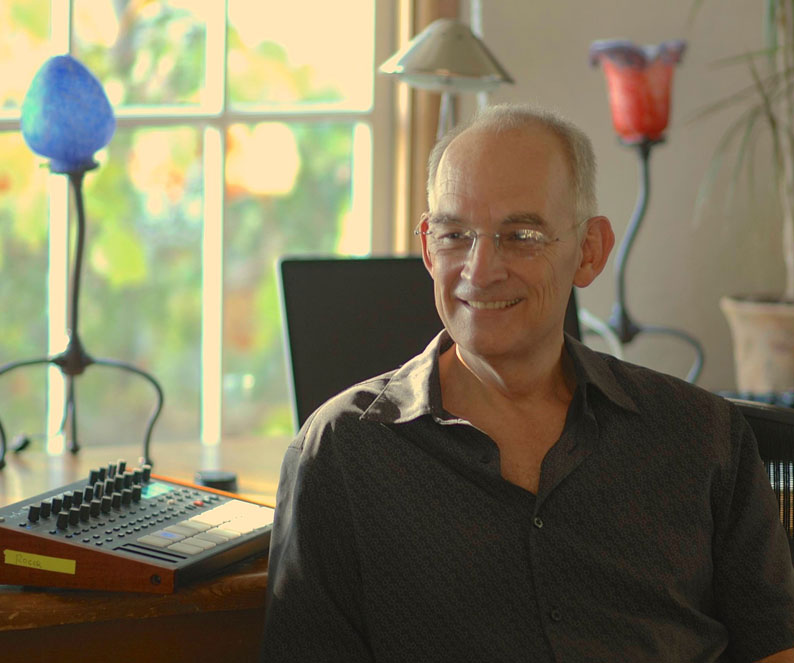
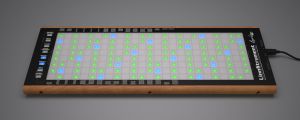


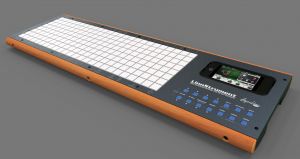


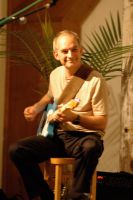
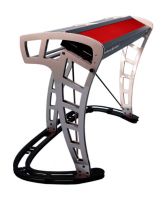

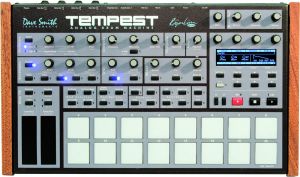
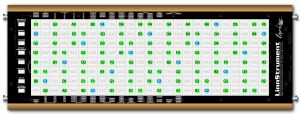

 Other Related News
Other Related News
